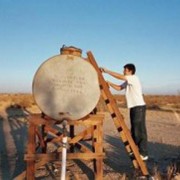Is your tank water safe to drink?
Rainwater from your roof can be a valuable resource and can be quite safe to drink when stored in a properly installed and maintained water catchment system.
What happens to the water in your tank?
Heavy materials in rainwater settle on the bottom of the tank and form a thick layer of sludge. Rainwater generally contains few chemicals. However, airborne contaminants in major urban and industrial centres may increase pollution. Micro-organisms from the roof or gutters can build up in the sludge layer.
Most micro-organisms are harmless and do not pose a health risk. However, some organisms commonly found in rainwater tanks can cause stomach aches, diarrhoea and similar ailments and can be quite dangerous for the very young and the very old. Amoebae may also be found in rainwater which may cause amoebic.
How to reduce pollution in you tank
Roof catchments should be kept clean and clear of leaves. Overhanging branches of trees and shrubs should be removed.
Cover the inlet and turn the down pipe to one side so the water from the first good rain rinses down the roof (especially if newly clad) and gutters then runs to waste.
The inlet and overflow of the tank should be screened with a mesh to prevent birds, animals and insects from gaining access to the water.
A leaf trap will reduce the amount of organic matter that enters the rainwater tank through the inlet.
The tank should be covered to prevent light from reaching the water as it will encourage the growth of bacteria. The cover should have a tightly sealed manhole, to allow access to the tank for cleaning and inspection purposes
Asbestos-related diseases are mainly caused by breathing very small air borne fibres into the lungs over a period of time. There is no known evidence to suggest such diseases occur from drinking rainwater collected from an asbestos cement roof.



